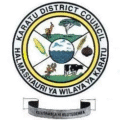About Company
General Overview
-
Established as a district in 1997 and officially registered in 2000 after general elections.
-
Covers approximately 3,300 km², making it the 4th-largest district in Arusha Region.
-
Shares borders with Ngorongoro to the north, Monduli to the east, Mbulu & Babati to the south, and Meatu in Simiyu Region to the west.
🏙️ Administrative Setup
-
Divided into 4 divisions (Mbulumbulu, Eyasi, Karatu, Endabash), 14 wards, and 58 villages.
-
Wards include: Baray, Buger, Daa, Endabash, Endamaghang, Endamarariek, Ganako, Kansay, Karatu, Mang’ola, Mbulumbulu, Oldeani, Qurus, Rhotia.
-
-
The district capital is Karatu town, also known as “Safari Junction” due to its proximity to Ngorongoro and Lake Manyara.
👥 Demographics
-
Population (2022 Census): 280,454 residents (131,417 males & 125,422 females as of 2012; growth reflects significant rise from previous census years).
-
Ethnic composition: Predominantly Iraqw, followed by Datooga, Hadza, with Swahili settlers.
-
Population density averages around 73 people/km², with lower density near Lake Eyasi (7–10/km²) and higher in urban wards (~100/km²).
-
Birth rate approximates 3.1%, literacy at about 64% (2016).
⛅ Climate & Geography
-
Climatic zones range from lowlands (~300–400 mm rainfall/yr) to highlands (~900–1,000 mm).
-
Elevation spans from Lake Eyasi basin to peaks around 1,900 m (Marang Mountains/Oldeani).
-
Three agro-ecological zones:
-
Highlands (1,400–2,000 m; 600–800 mm rain)
-
Midlands (900–1,400 m; ≥600 mm)
-
Lowlands (300+ mm).
-
-
Seasonal pattern: short rains (Nov–Dec), hot dry (Jan–Mar, mid-May), long rains (Apr), followed by cold dry (Jun–Oct).
🌱 Economy & Infrastructure
-
Agriculture and livestock dominate (~85% of economic activity): onions, coffee, wheat, barley, maize, beans; livestock includes cattle, goats, sheep, pigs, poultry .
-
Irrigation covers ~4,050 ha; maize yield averages 3 t/ha rainfed, 5.75 t/ha irrigated.
-
Livestock: over 800,000 animals; dairy production around 97.9 million liters (2015).
-
Industry: Small-scale (milk canning, coffee processing); tourism services (lodges, market stalls).
-
Road network: ~713 km total; 253 km regional (52 km tarmac), rest gravel/earth; T17 trunk road passes through.
-
Telecom: Multiple providers (Vodacom, Tigo, Zantel, TTCL).
-
Airstrips: Five (Manyara has commercial services).
-
Per capita income (circa 2016): ~800,000 TZS/year (~US$340).
🏥 Health & Education
-
Health facilities include multiple dispensaries, health centres, plus Karatu District Hospital and Lutheran Council Hospital in Qurus.
-
Educational institutions: primary and secondary schools, a teachers’ college, and Karatu Boys High School.
🌄 Tourism & Culture
-
Known as the “Onion Capital” of Tanzania; also attracts tourists en route to Lake Manyara & Ngorongoro.
-
Attractions include Endoro Falls, Lake Eyasi, Oldeani Peak, Mumba rock art, cultural tours with Hadza & Datooga groups.
⚖️ Governance & Council Responsibilities
Mandated by the Local Government Act (1982) to:
-
Maintain peace, order, and good governance
-
Promote social welfare and economic development
-
Ensure environmental conservation
-
Support decentralization and democratic participation
-
Generate reliable revenue and ensure financial accountability.
Key bodies include the District Executive Director, Council Chairperson, ward tribunals, and village/local governance teams.
In summary, Karatu District Council is a vibrant, agriculturally rich district strategically positioned as a tourism gateway, with diverse climate zones, a robust farming and livestock economy, developing infrastructure, and active governance aimed at fostering local development and public services.



Be a First Reviewer